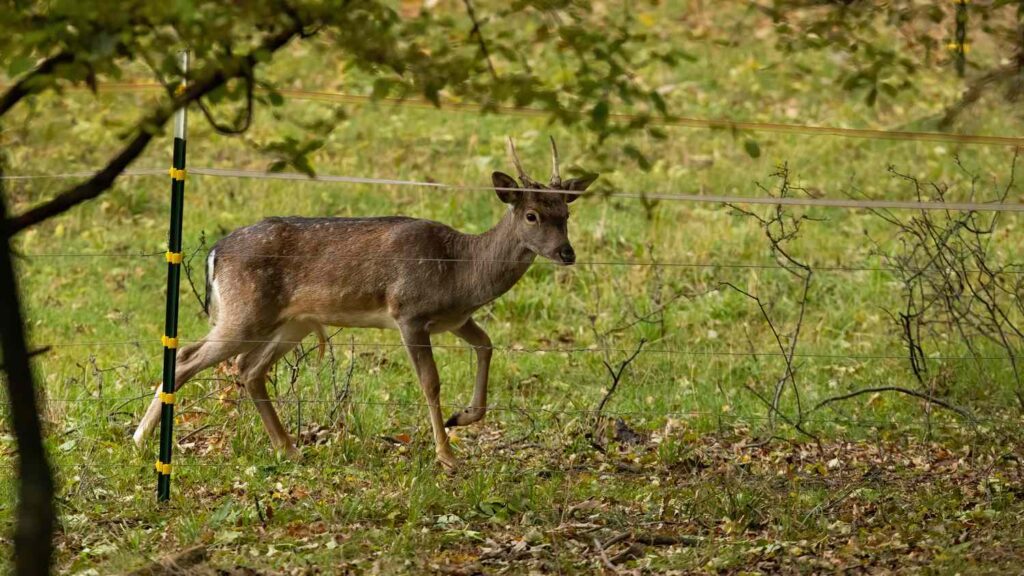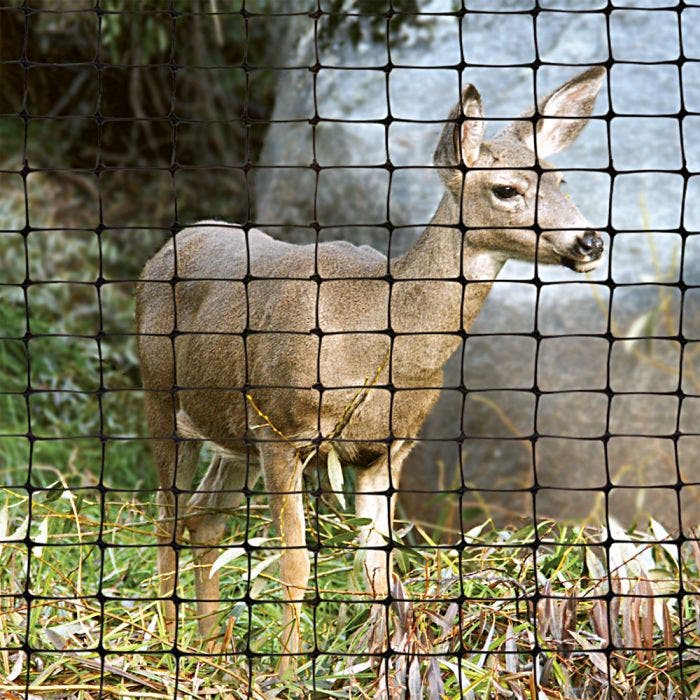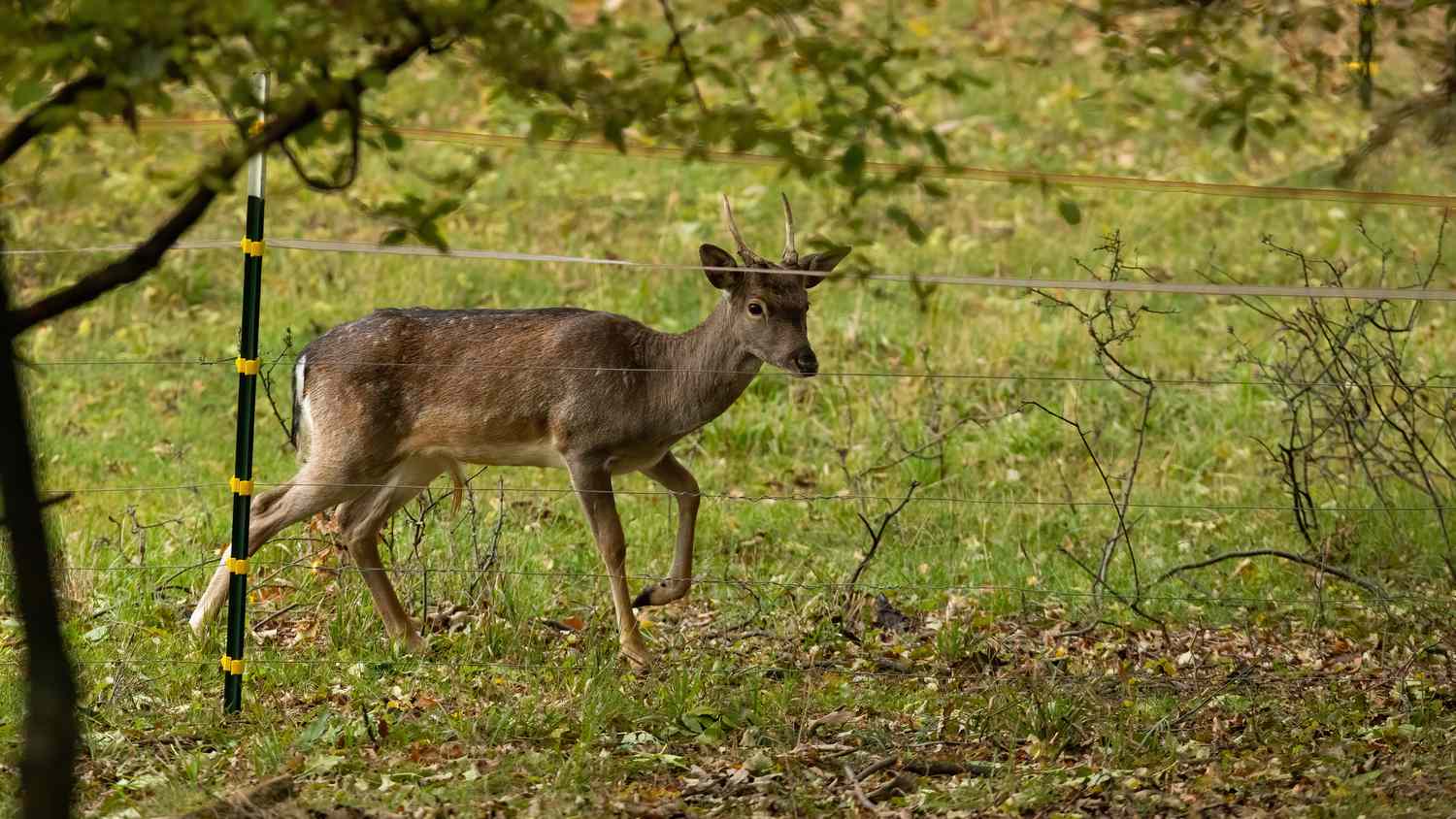Have you ever wondered about the importance of deer fencing? It’s something that many homeowners and gardeners have had to deal with at some point. How do you keep those pesky deer from eating all your plants and ruining your beautiful landscaping? Well, fear not! In this article, we’ll delve into the world of deer fencing and explore all the different options and techniques available to you.
When it comes to deer fencing, there’s a lot to consider. From the types of materials to the height and design of the fence, there are many factors that can determine its effectiveness. We’ll discuss the different types of deer fencing, such as traditional wooden fences, metal fences, and even electric fences. We’ll also cover topics like the best height for deer fencing, as well as how to properly install and maintain your fence. So if you’re tired of dealing with pesky deer in your garden or yard, keep reading! We’ve got all the information you need to create a deer-proof barrier that will keep those hungry critters at bay.
All About Deer Fencing
Deer can be a beautiful addition to any landscape, but when they start to destroy plants, crops, and property, they can quickly become a nuisance. To protect your investments and maintain the beauty of your surroundings, deer fencing is an effective solution. In this article, we will explore the benefits of deer fencing, different types of fencing materials, factors to consider when choosing deer fencing, installation and maintenance tips, natural deer deterrents, legal considerations, and much more.

Benefits of Deer Fencing
Protection for Plants and Crops
One of the primary benefits of installing deer fencing is the protection it provides for your plants and crops. Deer can cause significant damage by feeding on leaves, stems, and buds. This can lead to stunted growth, reduced yield, and even death of the plants. By erecting a deer fence, you can create a physical barrier that prevents deer from accessing your valuable vegetation.
Prevention of Damage to Property
Deer are known to cause damage to property by rubbing their antlers on trees, damaging bark and branches. Additionally, they may trample lawns, flower beds, and gardens while foraging for food. Installing a deer fence can effectively deter deer from entering your property, minimizing the potential for property damage.
Reduction of Deer Population
Deer populations have been on the rise in many areas, resulting in a strain on their natural habitats and increased conflicts with humans. By implementing deer fencing, you can help reduce the deer population in your immediate vicinity. This reduction can have positive ecological impacts and mitigate issues related to overgrazing and deer-human interactions.
Enhancement of Landscape Beauty
Deer fencing can also enhance the overall beauty of your landscape. By protecting the plants and crops, you can ensure they thrive and contribute to the aesthetics of your property. Deer fencing allows you to maintain a well-maintained and visually appealing landscape.
Different Types of Deer Fencing
When it comes to deer fencing, various materials and styles are available to suit different needs and preferences. Let’s explore some of the common types of deer fencing:
Wire Mesh Fencing
Wire mesh fencing, also known as woven wire or chain link fencing, is a popular choice for deer exclusion. It consists of tightly woven interlocking wires that create a physical barrier. Wire mesh fencing is durable and can be installed in different heights, making it suitable for various applications.
Electric Fencing
Electric fencing is an effective option for deer deterrence. It works by delivering a harmless electric shock to deer when they come into contact with the fence. The shock serves as a deterrent, teaching deer to avoid the area. Electric fencing should be installed according to local regulations and safety guidelines.
Polypropylene Fencing
Polypropylene fencing, also known as plastic mesh fencing, is a lightweight and affordable option. It is easy to install and provides a highly visible barrier that deters deer. Polypropylene fencing is available in different colors and mesh sizes, allowing you to choose the one that best suits your aesthetic preferences.
Wooden Fencing
Wooden fencing offers a traditional and aesthetically pleasing option for deer exclusion. It can be customized to various heights and styles, providing both functionality and visual appeal. Wooden fencing requires regular maintenance to ensure its durability and longevity.
:max_bytes(150000):strip_icc()/GettyImages-1395679220-b5db1dcd88644a639400d0e58fb12e51.jpg)
Factors to Consider When Choosing Deer Fencing
When selecting deer fencing for your property, several factors should be taken into account. Consider the following aspects to make an informed decision:
Height of the Fence
The height of the fence is crucial in determining its effectiveness. Deer are excellent jumpers, so the fence should be tall enough to prevent them from leaping over. A minimum height of 7-8 feet is recommended for most deer species. However, specific local regulations may dictate the required fence height in your area.
Strength and Durability
Deer can exert significant force when attempting to breach a fence. Therefore, it is essential to choose a fencing material that is strong and durable. Consider factors such as the thickness of the wires, the sturdiness of the posts, and the overall construction quality when evaluating the strength of the fence.
Visibility and Aesthetics
Deer fencing should be highly visible to ensure that deer can see and perceive it as a physical barrier. Opt for materials that provide sufficient visibility, such as wire mesh or polypropylene fencing. Additionally, take into consideration the aesthetics of the fence, as it should complement the overall design of your landscape.
Cost and Maintenance
The cost of deer fencing can vary depending on the material, height, and size of the area to be fenced. Evaluate your budget and choose a fencing option that provides the best balance between cost and quality. Additionally, consider the maintenance requirements of the chosen fencing material to ensure its long-term viability.
Installation of Deer Fencing
Proper installation is crucial to ensure the effectiveness and longevity of deer fencing. Here’s a step-by-step guide on how to install deer fencing:
Identifying the Area to be Fenced
Start by identifying the area you want to protect from deer. This could be your entire property or specific sections such as gardens or orchards. Clearly marking the perimeter will help ensure accurate measurements and precise installation.
Preparing the Ground
Before installing the fence, clear the area of any obstacles such as rocks, stumps, or tall vegetation. Level the ground to ensure a smooth installation process.
Installing Fence Posts
Mark the locations for your fence posts according to the desired spacing, typically 8-10 feet apart. Dig holes using a post hole digger or an auger, ensuring a depth that provides adequate stability. Insert the posts into the holes and fill them with concrete or gravel for added support.
Attaching the Fencing Material
Once the posts are secured, attach the chosen fencing material to the posts using appropriate fasteners such as screws or zip ties. Ensure the material is taut and properly aligned to create a sturdy and reliable barrier.

Maintenance of Deer Fencing
Regular maintenance is essential to keep your deer fencing in optimal condition and maximize its effectiveness. Here are some maintenance tips to follow:
Regular Inspection and Repair
Regularly inspect the fence for any signs of damage, such as loose wires, broken posts, or tears in the material. Promptly repair any issues to prevent deer from finding weak points and potentially breaching the fence.
Cleaning and Removing Debris
Clear any debris, leaves, or branches that may accumulate along the fence line. This prevents vegetation from interfering with the fence’s functionality and ensures better visibility.
Weed Control
Keep the area around the fence line free from weeds and tall grass. This helps discourage deer from attempting to test the fence by providing an unobstructed view of the barrier.
Protective Coatings
If you have chosen a wooden fence, applying protective coatings such as stain or paint can help prolong its lifespan. These coatings help prevent moisture damage, wood rot, and insect infestation.
Deer Behavior and Fencing
Understanding deer behavior is crucial when designing and installing deer fencing. Here are some key aspects to consider:
Understanding Deer Movement Patterns
Deer follow predictable movement patterns based on various factors such as food availability, water sources, and mating season. Observing their movement patterns can help determine the optimal placement of your deer fence.
Behavioral Responses to Fencing
Deer are intelligent animals and will often try to test or find weaknesses in the fence. They may attempt to crawl under, squeeze through gaps, or jump over the fence. By understanding their behavioral responses, you can design and reinforce the fence accordingly.
Deer Jumping and Scaling Abilities
Deer are capable jumpers, and their ability to clear fences depends on factors such as their breed, age, and overall health. By installing a fence that is at least 7-8 feet tall, you can effectively deter deer from jumping over.
Adapting Fencing to Deer Behavior
Observing deer behavior can help identify areas of vulnerability in your fence design. By reinforcing potential weak points or modifying the fence alignment, you can make it more difficult for deer to breach the barrier.

Natural Deer Deterrents
While deer fencing is highly effective, incorporating natural deterrents can provide additional protection. Consider the following natural methods to deter deer:
Planting Deer-Resistant Vegetation
Deer have specific preferences when it comes to their diet. By incorporating deer-resistant plant species into your landscape, you can reduce the attractiveness of your property to deer. Research and select plants that are known to be less appealing to deer.
Using Motion-Activated Sprinklers
Motion-activated sprinklers can startle deer by releasing sudden bursts of water when they approach. This unexpected deterrent can condition deer to avoid the protected area, especially during the sensitive growing season.
Applying Deer Repellents
Deer repellents are substances that emit a strong odor or taste, deterring deer from approaching. These can be applied to plants, fences, or specific areas to discourage deer from entering. Choose natural or commercially available repellents based on your preferences and environmental considerations.
Installing Scare Devices
Scare devices such as visual deterrents, noise-making devices, or even predator decoys can temporarily startle and deter deer. Rotate the use of scare devices regularly to prevent deer from becoming accustomed to them.
Legal Considerations for Deer Fencing
Before installing deer fencing, it is essential to understand and comply with any local zoning regulations or homeowner association guidelines. Consider the following legal considerations:
Local Zoning Regulations
Some jurisdictions may have specific rules regarding fence height, materials, or appearance. Familiarize yourself with any applicable zoning regulations to ensure compliance.
Boundary Sharing with Neighbors
If your property shares boundaries with neighbors, it is essential to communicate and obtain their consent before installing any permanent structures. Collaboration and mutual understanding can help avoid conflicts and ensure a cohesive approach.
Permits and Certifications
In some areas, installing a deer fence may require obtaining permits or certifications. Check with your local authorities to determine if any such requirements exist and adhere to the necessary procedures.
Liability and Insurance
Installing a deer fence may impact the natural movement of wildlife. Consider the liability and insurance implications associated with altering wildlife patterns to ensure you are adequately protected.

Deer Fencing for Different Landscapes
Deer fencing is suitable for a wide range of landscapes and applications. Here are some examples of where deer fencing can be beneficial:
Residential Gardens and Lawns
Protecting your residential gardens and lawns from deer damage can help ensure your investment in landscaping is preserved. From small backyard gardens to extensive lawns, deer fencing can provide effective protection.
Agricultural Farms and Orchards
Deer can cause significant economic losses on agricultural farms and orchards. Installing deer fencing around these areas can safeguard crops and ensure a healthy yield.
Commercial Landscapes and Parks
Commercial properties such as hotels, resorts, golf courses, and public parks can benefit from deer fencing to maintain the aesthetic appeal of the landscape and prevent property damage.
Natural Reserve Areas
In natural reserve areas, deer fencing can be used to protect fragile ecosystems and endangered plant species. It helps maintain the delicate balance of natural habitats by minimizing the impact of deer browsing.
Deer Fencing Accessories and Tools
Several accessories and tools can enhance the functionality and ease of use of deer fencing. Consider the following additions:
Gates and Entry Systems
Gates provide access to the protected area while maintaining the integrity of the fence. Choose sturdy and secure gate systems that are compatible with your chosen deer fencing material.
Corner and End Braces
Corner and end braces provide additional support and stability to the fence. They help prevent the fence from sagging or collapsing under pressure, enhancing its overall durability.
Tensioning and Anchoring Systems
Tensioning and anchoring systems help keep the fence securely in place. These mechanisms ensure that the fence remains taut and resistant to deer’s attempts to push or pull the material.
Fence Repair Kits
Accidents or natural wear and tear can lead to damage in the deer fence over time. Having a fence repair kit on hand allows for quick and easy repairs, ensuring consistent protection against deer intrusion.
Evaluating the Effectiveness of Deer Fencing
To determine the effectiveness of your deer fencing, it is important to regularly monitor and assess its performance. Consider the following evaluation methods:
Monitoring Deer Activity
Observe and track deer activity around the fenced area to ensure they are deterred from entering. Look for signs of attempted breaches, such as bent wires or disturbed vegetation.
Assessing Crop and Plant Damage
Evaluate the condition of your plants and crops within the fenced area. If damage is still occurring despite the presence of the fence, it may be necessary to reassess the fence’s effectiveness or explore additional deterrent methods.
Comparing Different Fencing Systems
If you have installed multiple types of deer fencing on your property, compare their performance to determine which system works best. Evaluate factors such as cost, durability, and effectiveness.
Feedback from Fence Users
Seek feedback from others who have installed deer fencing in similar environments. Their insights and experiences can provide valuable information and help troubleshoot any challenges you may encounter.
Cost Analysis of Deer Fencing
Cost is an important consideration when deciding to install deer fencing. Here is a breakdown of different cost factors:
Material Costs
The cost of materials varies depending on the type chosen. Factors such as fence height, length, and the quality of materials can impact total expenses. Research and compare prices to ensure you are getting the best value for your investment.
Labor and Installation Costs
If you choose to hire professionals for deer fence installation, labor costs should be factored into your budget. The complexity and size of the project will influence the overall installation expenses.
Maintenance and Upkeep Costs
Maintaining the deer fence may require regular inspections, repairs, and replacement of worn-out components. Consider these ongoing maintenance costs when evaluating the long-term financial investment.
Long-Term Benefits and Return on Investment
Although installing deer fencing incurs upfront costs, consider the long-term benefits and return on investment. Protecting valuable plants, crops, and property from damage can lead to significant savings and increased property value over time.
Common Mistakes to Avoid in Deer Fencing
To ensure the effectiveness of your deer fencing, it is important to avoid common mistakes that could compromise its functionality. Here are some pitfalls to watch out for:
Insufficient Fence Height
Deer are adept jumpers, and a fence that is too short will not effectively deter them. Ensure the fence’s height is sufficient to prevent deer from leaping over.
Poorly Secured Fence Posts
Weak or poorly secured fence posts can compromise the entire fence structure. Use appropriate techniques and materials to anchor posts securely and prevent leaning or collapsing.
Neglecting Regular Maintenance
Regular maintenance is essential to detect and address any weak points or damage in the fence promptly. Neglecting maintenance can lead to compromised functionality and increased susceptibility to deer intrusion.
Using Ineffective or Low-Quality Materials
Choosing subpar or unsuitable materials can result in an ineffective deer fence. Invest in quality materials that are specifically designed for deer exclusion to maximize the fence’s efficiency and longevity.
Conclusion
Deer fencing is a valuable tool for protecting your plants, crops, and property from deer damage. By carefully considering the various factors involved, such as the type of fencing material, installation process, and maintenance requirements, you can create a reliable and effective deer exclusion system. Additionally, incorporating natural deterrents, understanding deer behavior, and adhering to legal considerations will further enhance the functionality and success of your deer fencing. With proper planning and implementation, you can enjoy the benefits of a thriving landscape while minimizing the impact of deer.
